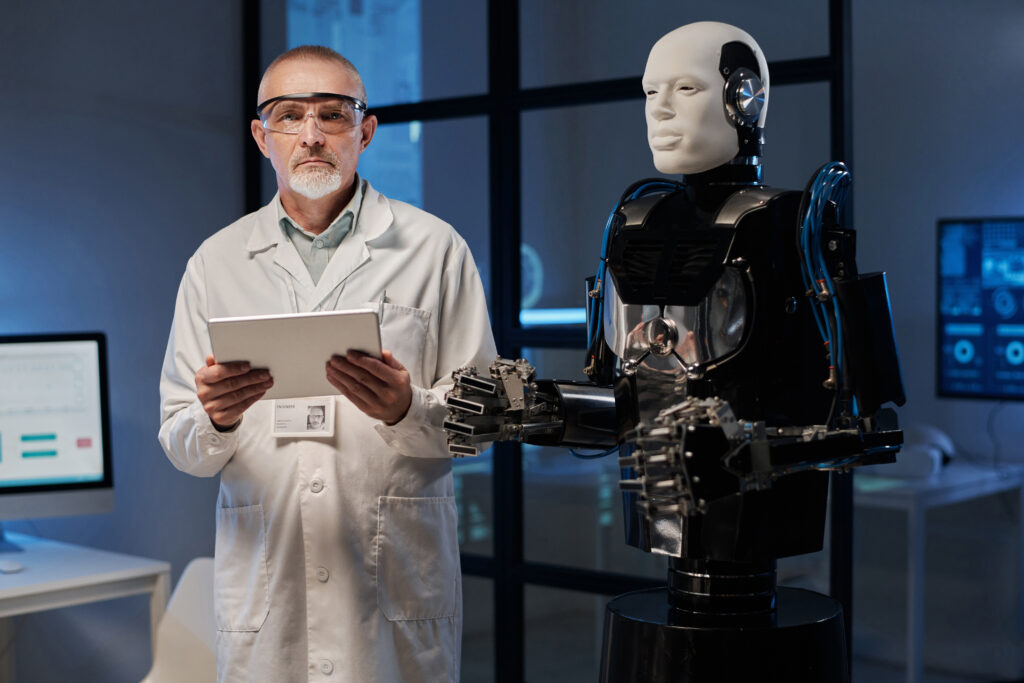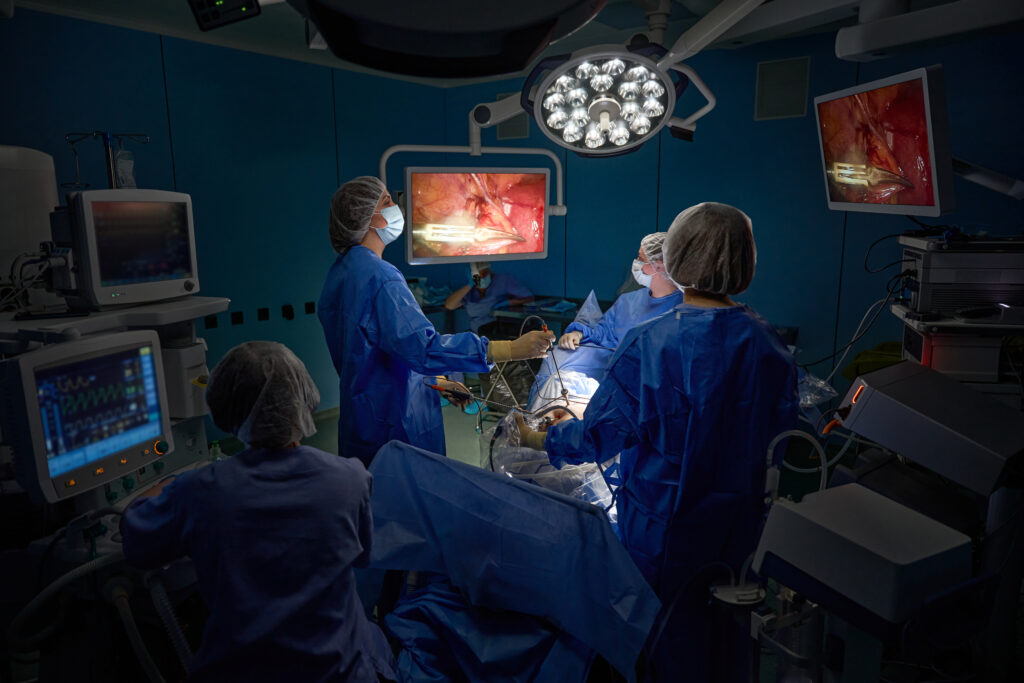Introduction
Is robotic surgery better than traditional surgery ? In this article, we investigate its advantages, disadvantages and real-life case studies to understand its role in healthcare delivery. While robotic surgery has emerged as an incredible advance, both patients and surgeons still pose this question about its capabilities.

Problem: The Challenges in Traditional Surgery
Despite the long history of traditional surgery, there are certain challenges that healthcare professionals have been working to overcome for years.
- Traditional surgery has long been practiced; yet its history poses certain unique difficulties that healthcare professionals have been working towards overcoming for some time now.
- Precision Issues: Even highly qualified surgeons may encounter limitations in performing ultra-precise movements for delicate operations.
- Traditional surgery often necessitates making large incisions, leading to longer recovery periods and increased infection risks.
- Surgeon Fatigue: Complex surgeries lasting several hours may prove exhausting for surgeons, potentially impacting performance in subsequent procedures.
- Human Error: Just like any activity undertaken by humans, surgery carries with it the inherent risk of error, especially during complex procedures requiring absolute precision.
My first encounter with robotic surgery immediately captured my interest and left me thinking how technological advancement can actually benefit healthcare.
Agitate: The Consequences of These Challenges
- Longer Recovery Times for Patients: Longer hospital stays and recovery periods caused by more invasive surgeries with larger incisions require longer hospital stays for recovery periods resulting in missed work days and increased emotional strain for the patients involved.
- Higher Infection Risks: Open surgeries expose patients to increased infection risks, potentially further complicating recovery and necessitating additional surgeries or treatments in some instances.
- Surgeon Limitations: Surgeons’ physical strain can compromise results during surgeries that require extreme precision, leading them to take less optimal decisions for results.
- Impact on Patient Outcomes: Manual surgery errors can have devastating outcomes, necessitating more reliable, precise methods.
When I researched more, I found myself drawn to the idea of less invasive procedures. My thought was, if it can help reduce recovery time, why not consider it?
Solution: How Robotic Surgery Addresses These Issues
Robotic surgery has gained much traction as an answer to traditional surgeries’ limitations, revolutionizing landscape in various ways:
- Robots Can Offer Greater Precision: Due to their extraordinary precision, robotic arms allow surgeons to perform procedures more precisely – particularly those located in difficult-to-access regions.
- Minimally Invasive Techniques: Robotic systems often utilize smaller incisions for surgery, decreasing trauma to the body while decreasing blood loss for faster healing times and recovery periods.
- Surgeon Fatigue Reduction: Surgeons can operate the robotic system through an ergonomic console that reduces physical strain during long procedures.
Studies demonstrate that robotic surgeries tend to experience fewer postoperative complications due to their precision and minimally invasive nature.

Comparing Robotic Surgery with Traditional Surgery
Let’s compare robotic and traditional surgeries directly:
a) Precision
- Precision : The accuracy and precision of traditional surgery is entirely up to its surgeon there can be no guarantees over accuracy with regard to precision of results based solely upon surgeon skill alone
- Robotic Surgery provides unsurpassed accuracy through robotic arms controlled by surgeons.
b) Invasiveness
- Traditional Surgery often requires large incisions that cause more trauma.
- Robotic Surgery uses smaller incisions with reduced trauma on surrounding tissues resulting in faster recoveries times for its patients.
c) Recovery Time
- Traditional Surgery can have extended recovery times with increased risks for complications.
- Robotic Surgery typically results in faster recoveries times with decreased complications and shorter hospital stays for the patient.
d) Surgeon Control
- Traditional Surgery entails complete manual control with potential fatigue issues impacting performance
- Robotic Surgery allows full surgeon control while offering enhanced capabilities to fine tune movements.
At first glance, robotic surgery’s greatest asset for me has been its accuracy. Knowing that an experienced surgeon can perform delicate procedures with such pinpoint precision has given me much peace of mind.
Case Studies: Robotic Surgery Success Stories
Here are several real-life examples that demonstrate how robotic surgery is making a difference:
(a) Prostate Cancer Surgery
In traditional surgery settings, prostate cancer surgery would often cause significant postoperative discomfort and recovery time delays compared to its robotic equivalents

- Robotic Prostatectomy :For prostate cancer surgery performed using open prostatectomy techniques alone can significantly shorten recovery times by cutting post-op pain down considerably as compared to traditional open surgery options.
- Open Prostate : Cancer Surgery Open prostatectomy caused significantly greater post op discomfort than its robotic counterpart while recovering time requirements were usually longer as a result.
- Robotic Surgery: According to research performed by the American Urological Association, robotic-assisted prostatectomies reduced hospital stays and recovery times significantly while simultaneously decreasing blood loss and need for pain medications post surgery.
b) Hysterectomy
- Traditional Surgery: Open hysterectomies often required large incisions and long recovery times; robot-assisted hysterectomies resulted in reduced post-surgery complications as well as quicker returns to daily activities, according to research published in JAMA Surgery.
As a patient, I would opt for robotic surgery if it meant faster recovery – my time is valuable, so quicker recovery matters to me.
Benefits of Robotic Surgery
Robotic surgery offers clear advantages that patients and healthcare providers appreciate:
- Less Blood Loss: With smaller incisions and greater precision, robotic surgeries tend to result in significantly less blood loss compared to their conventional counterparts.
- Lower Risk of Infection: Because minimally invasive techniques limit exposure, their use reduces infections.
- Shorter Hospital Stays: Many robotic surgery patients can go home sooner after receiving care thereby cutting overall healthcare costs significantly.
- Cosmetic Advantages: Smaller incisions mean smaller scars, an important consideration for many patients.
However, I must also carefully assess any associated risks. Although robotic surgery offers numerous advantages over its manual counterpart, I always evaluate each surgeon carefully in terms of his or her experience and whether robotics is right for my particular case.
I think about the possible risks too. While robotic surgery is impressive, I always consider the surgeon’s expertise and whether it’s the right fit for me.
Drawbacks of Robotic Surgery
While robotic surgery offers numerous advantages, there can be disadvantages as well:
- Cost: Robotic systems can be prohibitively costly for some facilities or patients – costs that not all hospitals or patients can bear.
- Learning Curve for Surgeons: Robotic surgery requires specialized training and experience from surgeons; not all surgeons are proficient at its use.
- Availability: Due to high costs and infrastructure requirements, robotic surgery may not be available in every hospital.
- Traditional surgery still holds value; however, robotic surgery provides us with a glimpse of what lies ahead with this emerging technology. I find it fascinating and inspiring at how far its potential extends into future applications.
In my opinion, traditional surgery still has its place, but robotic surgery gives us a glimpse of the future. It’s exciting to see where this technology will take us next

The Role of Technology in Shaping the Future of Surgery
- Artificial Intelligence and machine learning integration is expected to push surgical technology even further forward, opening new frontiers of surgical care and surgery in general. Here is what lies in store in future:
- AI-Assisted Surgeries: Artificial intelligence could assist surgeons with decision-making during procedures, leading to more precise outcomes and increasing surgical success rates.
- Autonomous Surgery: While still in experimental phases, fully autonomous robotic surgery could become reality eventually with robots performing certain surgeries independently.
- As technology and costs evolve, robotic surgery could become more accessible to hospitals and patients worldwide.
How to Decide: Robotic Surgery vs. Traditional Surgery
So, is robotic surgery better than traditional? There are various factors involved when comparing robotic versus traditional surgery procedures:
- Type of Operation (such as Prostatectomy, Colorectal surgery or Gynecological procedures). Robotic may provide superior outcomes versus Traditional Surgeries
- Surgeon Experience and Training: When considering robotic surgery as an option, always check that the surgeon performing it has extensive training and experience.
- Cost Considerations: Robotic surgeries tend to be more expensive; therefore it’s essential that patients understand any financial repercussions involved with robotic procedures.
- Patient Health: Individuals living with specific medical conditions could particularly gain from minimally invasive robotic surgeries.
Telemedicine and Personalized Medicine
- Telemedicine allows physicians to deliver care remotely, making healthcare more accessible.
- Meanwhile, personalized medicine tailors treatments based on an individual’s genetic profile, environmental considerations and lifestyle factors.
- Telemedicine complements personalized medicine by offering remote monitoring and follow-ups, targeting patient needs through remote follow-up.
- Together these technologies aim to optimize outcomes by tailoring care delivery specifically to each individual – revolutionizing care delivery especially in cases involving chronic diseases.
Case Studies of Telemedicine and Personalized Medicine
- One Alaska study demonstrated successful diabetes management using telemedicine while Veterans Health Administration reports reduced hospital admissions through this form of service delivery.
- Personalized medicine has improved cancer treatment outcomes by targeting specific genetic mutations.
- A telemedicine program for heart failure patients led to reduced readmission rates according to research published in Journal of Telemedicine.
- Research by Mayo Clinic demonstrated the success of personalized therapies in treating rare diseases.
Examples of Personalized Medicine in Practice
- Genetic testing helps doctors select appropriate cancer medicines.
- Individual genetic mutation-specific therapies have shown tremendous promise as treatments for cystic fibrosis patients.
- Pharmacogenomics assists doctors in selecting the optimal drug doses to treat cardiovascular disease.
- Precise medicine has also proven useful when immunotherapeutic ally treating melanomas directly while personalized nutrition plans have also been created based on individuals’ microbiomes.
Telemedicine Handling Emergencies
- Telemedicine provides real-time consultations with specialists for urgent cases.
- Triage systems allow virtual triage doctors to prioritize patients based on severity of symptoms while remote patient monitoring tools alert healthcare providers of any critical health changes that arise during monitoring processes.
- Telemedicine helps speed decision-making when treating stroke patients, improving outcomes.
- Hospitals also utilize this platform when immediate surgery needs arise and provide access to trauma experts via remote consultation.
Telemedicine and Trauma Cases
- Telemedicine provides rural trauma centers access to specialists at larger hospitals for assistance and remote guidance for stabilization prior to transport of trauma patients.
- It may also assist in diagnosing internal injuries using imaging tools.
- Emergency protocols for trauma via telemedicine emphasize quick, accurate decisions.
- In military settings, it has also been successfully employed for treating battlefield injuries via remote treatment.
Managing Emergencies in Remote Areas with Poor Internet Connectivity
- Satellite communication provides the means of providing telemedicine services, while mobile health units with satellite links help bridge any distance in rural regions.
- Backup systems such as radio frequencies may be deployed when internet service becomes unreliable in an emergency, using low-bandwidth tools for transmitting essential data in critical cases.
- Healthcare providers have begun creating hybrid telemedicine models specifically tailored for areas with inconsistent internet access.

Conclusion: Is Robotic Surgery Better Than Traditional Surgery?
So, is robotic surgery better than traditional surgery? Does Robotic Surgery Outweigh Traditional? The answer varies based on various factors including surgery type, patient health status and availability of technology. That being said, robotic surgery has revolutionized healthcare with benefits including precision, faster recovery times and reduced complications; its role may only increase as technology continues its advancement – becoming an invaluable option within modern healthcare provision.
FAQs
- Is robotic surgery safer than traditional surgery?
- Robotic surgery often offers increased precision, which often equates to less complications and quicker recover times during certain procedures.
- Does robotic surgery cost more?
- Yes, robotic surgery tends to be more costly due to equipment costs and required training for surgeons.
- Can every surgeon perform robotic surgery?
- No; surgeons specialized in operating robotic systems require training in order to do it effectively.

